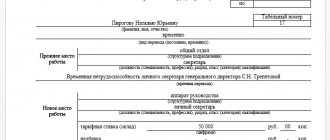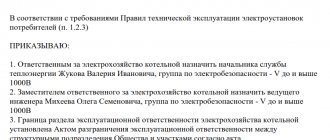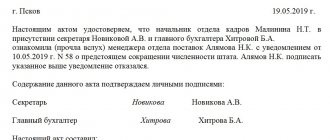Drawing up an obligation of non-disclosure of trade secrets is required when an enterprise or organization wants to protect itself from the dissemination of any secret information about its activities. The obligation can be drawn up in the form of a separate document, as an annex to the employment contract, or included directly in its text.
- Form and sample
- Free download
- Online viewing
- Expert tested
FILES
Why do you need a non-disclosure agreement?
First of all, through this document, enterprises operating in the commercial sector (especially in the manufacturing sector) seek to protect themselves and their products from attacks by competitors. The obligation allows you to make a promise from employees not to distribute a trade secret that has fallen into their hands, which most often is essentially
- secret innovative ideas,
- unpatented inventions,
- information about the company’s pricing policy and profits,
- data on concluded contracts and transactions,
- further plans and strategy for the development of the enterprise.
It should be noted that companies, for their part, should also strive to ensure the safety of sensitive information by limiting access to it. Otherwise, if it comes to legal disputes, it will be very difficult to identify the source of the disclosure, and it will be completely problematic to prove the guilt of this or that employee.
Why do they sign?
A corporate secret is information that is of particular value to the organization, allows it to operate effectively in the market, make a profit, minimize costs, and avoid losses. Any information other than those listed in Article 5 of Federal Law No. 98-FZ is recognized as a corporate secret. For example, the following cannot be considered secret:
- information about the number of employees of the organization and their working conditions;
- information about offenses committed or being committed by the company;
- information about environmental pollution arising in connection with the organization’s activities.
To maintain the trade secret regime, they sign a non-disclosure agreement with the employee or partner organization. The non-disclosure requirement applies to everyone to whom the information has become available: disclosure will be held accountable, and the culprit will pay compensation for losses that arose because of this. The agreement is drawn up as a separate document or as a clause on non-disclosure of trade secrets in an employment contract - simultaneously with hiring, the employee assumes the obligation to store information received from the new employer.
If an employer obliges an employee to sign a non-disclosure agreement, he is obliged to officially familiarize him with all documents relating to the established regime: regulations on the regime, a list of classified information and instructions for handling documents containing it.
Who draws up the document
The commitment is written on behalf of an employee of the company, but, as a rule, its basis is developed
- legal advisers of the enterprise (but there may also be lawyers “from outside”)
- or direct management.
In any case, the specialist drawing up the document form must have the necessary level of knowledge for its competent execution, and must also be familiar with the legislation of the Russian Federation in the field of civil, administrative and labor law. We should not forget that the document is legally significant and, if necessary, can be demanded in court.
When to use
As a rule, the following persons have access to information constituting a trade secret of an organization:
- company employees who need such information for the proper performance of their official duties;
- the company's counterparties who need information for the proper execution of concluded civil contracts.
Issues of information protection in Russia are regulated by the Civil Code of the Russian Federation (for example, Article 727 of the Civil Code of the Russian Federation), the Federal Law “On Trade Secrets,” as well as the Law of the Russian Federation “On Information, Information Technologies and Information Protection.” But how exactly to protect their secrets is up to each company to decide independently.
An employee’s obligation to maintain confidentiality can be specified both in the employment contract itself and in a special addendum to it.
The scope and procedure for access to secret information of counterparties can also be regulated by both the main contract and an additional agreement.
When is an obligation of non-disclosure of trade secrets issued?
In general, this paper is written directly during employment. However, the option of writing a document during the period of work, for example, when transferring to another position or in cases where previously such a document was not on the list of required signatures, is not excluded.
It must be remembered that before requiring an employee to sign an obligation, the employer (also against a signature) is obliged to familiarize him with the full list of information related to a trade secret.
Disciplinary
Only an employee of the organization can be brought to disciplinary liability, and not only in the case where the information was disclosed. An employee can also be punished for actions that violate the established trade secret regime, since compliance with this regime is the employee’s responsibility (if there is a corresponding clause in the employment contract). For these actions, the employee may be reprimanded or reprimanded.
If an employee repeatedly violates the regime, but no disclosure has occurred, the employee can be dismissed on the grounds provided for in paragraph 5 of Part 1 of Art. 81 of the Labor Code of the Russian Federation, “for repeated failure by an employee to fulfill labor duties without good reason, if he has a disciplinary sanction.” Also, an employee may be dismissed under paragraphs. “c” clause 6, part 1, art. 81 of the Labor Code of the Russian Federation - for a one-time gross violation of labor duties: disclosure of a legally protected secret (state, commercial, official, etc.) that became known to the employee in connection with the performance of his labor duties.
The procedure for bringing an employee to disciplinary liability in this case does not differ from the generally accepted one provided for in Chapter. 30 Labor Code of the Russian Federation.
Rules for drawing up a document
There is no standard, unified form of obligation, so enterprises and organizations can write it in any form, based on their needs. The company can also develop a document template, but in this case it must be approved in the company's accounting policies. Regardless of which path is chosen, the commitment must include information about
- company name,
- the date and place of its compilation,
- employee personal data,
- as well as the obligations themselves.
The volume of the document is not limited, so one should take into account the fact that the more carefully the main text is developed, the greater the guarantee that it will not be violated, and even if it is, the employer will be able to prove this fact in court.
Documentary protection of classified data
For successful business, methods of protecting confidential information from competitors are of particular importance. A non-disclosure agreement will allow you to safely use valuable data in your relationships with others.
An agreement on confidentiality and non-disclosure of information is concluded between the parties in writing. Sometimes when naming this document they use an English abbreviation, which not everyone understands, so the question is often asked: what is an NDA agreement? NDA (Non-disclosure agreement) is a written agreement on confidentiality and non-disclosure of information.
Establishing a regime for working with classified data in an organization allows the application of various measures of responsibility depending on the severity of the consequences for the organization. In the field of labor relations, an agreement is concluded with the employee; in civil law relations, a confidentiality agreement is concluded between legal entities.
Rules for drawing up an obligation of non-disclosure of trade secrets
The obligation can be written personally by the employee by hand (under dictation from the responsible employee of the enterprise) or printed on a computer. It can be issued on a regular A4 sheet or on company letterhead.
The only immutable rule: the document must contain the employee’s original signature.
It is issued in a single copy.
After drawing up and signing the obligation, it, along with other personal papers, is stored in the employee’s personal file.
What information can be protected by an NDA?
In Russia, confidential information includes several types of information. This could be state or official secrets, personal data, and so on. They are protected by relevant regulations. As for NDA, we are, as a rule, talking about a trade secret Federal Law of July 29, 2004 No. 98-FZ.
By law, you can protect information that is valuable precisely because it is unknown to third parties. For example, an organization plans to launch a unique product on the market. If the technology for its development becomes known, competitors may make a similar product - and at the same time as the original. This means that the company risks losing profits. Therefore, the development technology can definitely be a trade secret.
At the same time, there is a fairly large Federal Law of July 29, 2004 No. 98-FZ, a list of data that cannot be classified. This is, for example, information about the number and composition of personnel, the payment system and working conditions. You can read more in Lifehacker’s material about trade secrets. If you try to prohibit the disclosure of this information in the NDA, the document will be easy to challenge in court.
An NDA can include an obligation to keep secret other information that the parties consider confidential, even if it is not protected by law. But only if regulations do not prohibit this.
Sample agreement on non-disclosure of trade secrets
- The name of the enterprise is written at the top in the middle, the line below is the place where the obligation was drawn up (city or other locality) and the date.
- Next is the name of the document.
- In the main part, first fit
- last name, first name, patronymic and position of the employee,
- number and date of his employment contract,
- as well as the period during which he must keep company secrets after dismissal.
- Next comes the text of the obligation itself - here you can enter any information that the employer considers necessary to include.
Among other things, it is recommended to indicate that upon dismissal, the employee is obliged to hand over all information in his possession to the responsible persons, and in case of violation of this obligation, he will suffer appropriate punishment (strictly within the framework of the current law). - Finally, the document must be signed by an employee of the enterprise (indicating his position and deciphering the signature).
Criminal
Article 183 of the Criminal Code of the Russian Federation provides for criminal liability for the illegal receipt and disclosure of information constituting a trade secret. According to Part 2 of this article, illegal disclosure or use of information constituting commercial, tax or banking secrets, without the consent of their owner, by a person to whom it was entrusted or became known through service or work, is punishable by a fine of up to 120,000 rubles. or in the amount of wages or other income of the convicted person for a period of up to one year with deprivation of the right to hold certain positions or engage in certain activities for a term of up to three years or imprisonment for a term of up to three years.
The same acts that caused major damage or were committed out of selfish interest are punishable by a fine of up to 200,000 rubles. or in the amount of wages or other income of the convicted person for a period of up to 18 months with deprivation of the right to hold certain positions or engage in certain activities for a term of up to three years or imprisonment for a term of up to five years (Part 3 of Article 183 of the Criminal Code of the Russian Federation).
Part 4 art. 183 of the Criminal Code of the Russian Federation provides for liability for the same acts that entail grave consequences, and punishment for them is provided for up to 10 years in prison.
N.V. Senatorova
Department head
legal and personnel
support of JSC “KIASystems”









